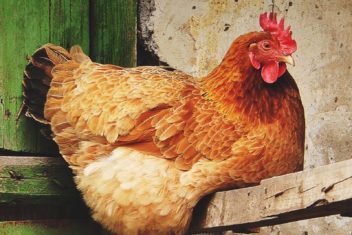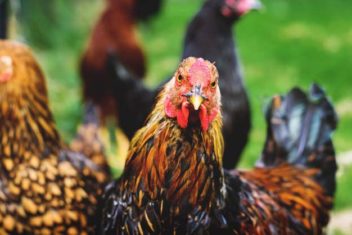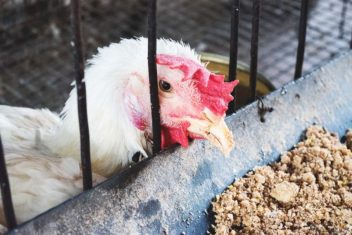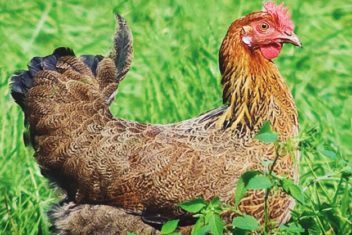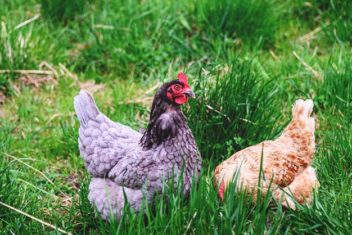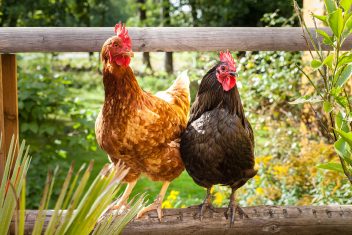As the name of this affliction may suggest, there is nothing pleasant for a hen about being egg bound.
Not only is an egg bound chicken extremely uncomfortable, but she is also in danger. If an egg becomes stuck inside a hen’s reproductive tract, she is unable to defecate and will die within 24 hours.
The good news is, if you can identify the symptoms of an egg bound chicken, you can also help her get things moving again.
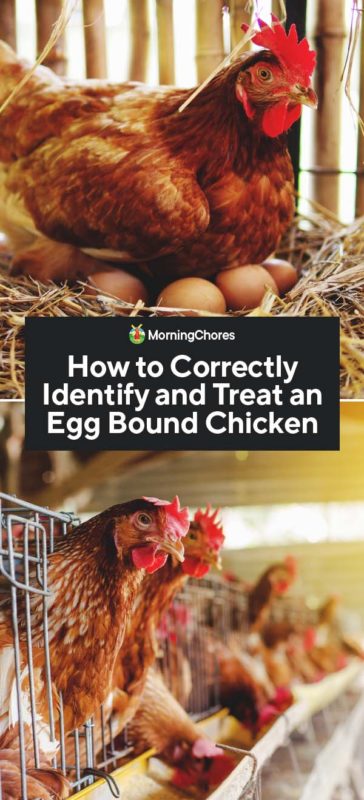
Egg Bound Chicken Symptoms
One of the first signs of egg binding is seeing your hen become detached, or isolated. This is a common symptom for many illnesses, so let’s dive into some more telltale signs:
- Lethargic
- Puffed-up appearance
- Closed eyes
- Not keeping up with the rest of the flock (isolated)
- Unwilling to leave nesting box, but not broody
- Unnatural gait (walking funny)
- Vent straining, bearing down
- Squatting or sitting frequently
- Tail flipping
- Presence of the egg, when gently palpating the abdomen
Causes of Egg Binding in Chickens
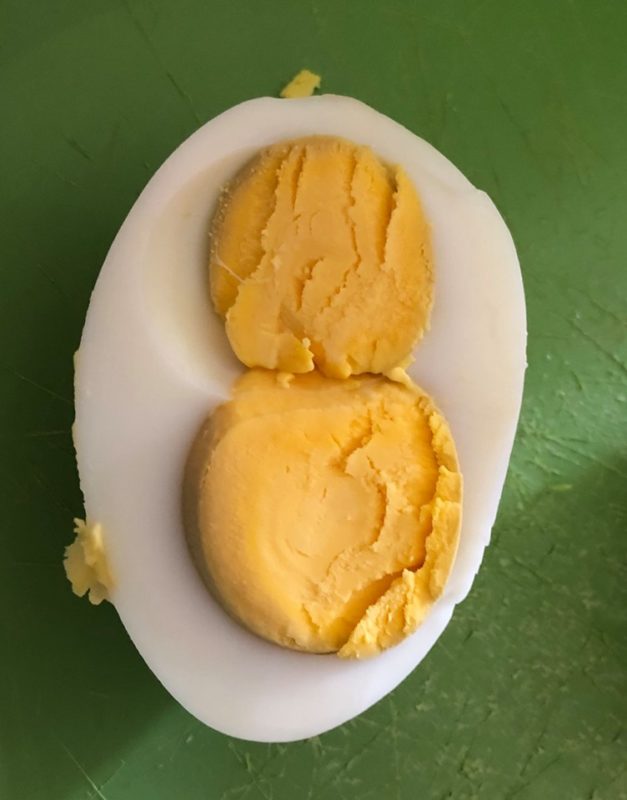
Chickens can become egg bound for many reasons, but here are the most common causes:
- Double-Yolkers (I know you love them, they are practically the trophy of the chicken world, but they can be a beast for your hen to expel)
- Odd or unusually shaped eggs
- Underlying infections of the reproductive system
- Genetics (if you have a line of hens that frequently have this problem, it could be genetics
- “Holding it” – Hens may hold their eggs if they cannot find a suitable nesting box
- Parasites
- Premature laying
Judging if it is Constipation or Not
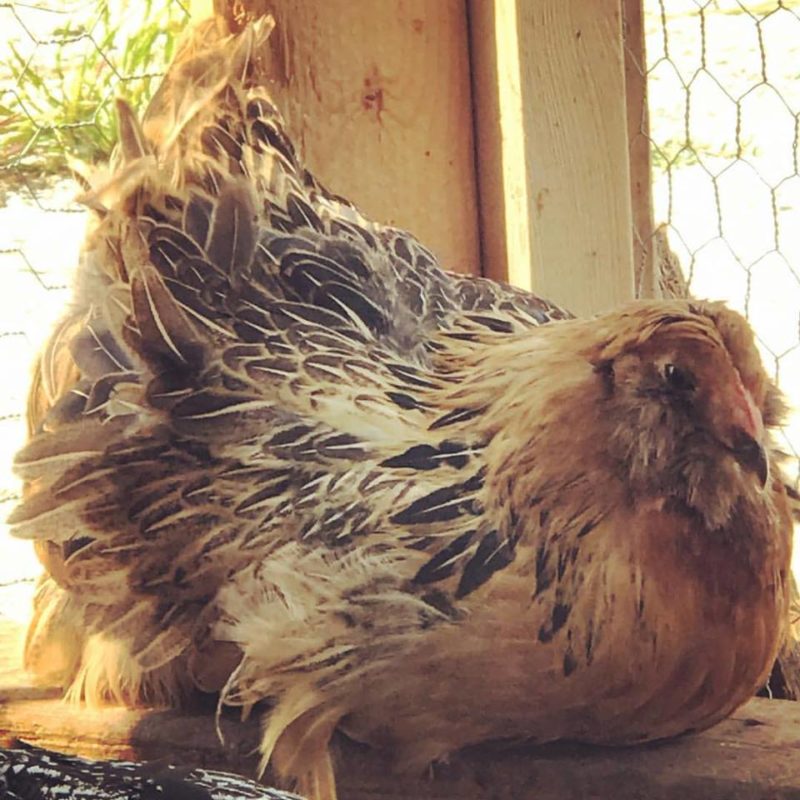
Constipation and egg binding have a lot of the same symptoms. So before you begin treating your egg bound chicken make sure she isn’t blocked up by something else.
Sometimes, you can feel the egg stuck inside the chicken if she’s egg bound. Simply palpate the abdomen, gently, and feel for the egg. You can also use a glove and some olive oil to reach in gently and feel for the egg.
If there is no egg, your hen may just be a little constipated. Watch her diet, and try not to overfeed with treats. If she does not defecate in 48 hours, a trip to the vet may be in order.
How to Fix an Egg Bound Chicken
Treating egg-bound hens can be a bit of a process, and depending on how soon you identify the problem, you may be able to assist your hen at home.
If you know your hen is egg bound, here’s what you should do:
1. Give Her a Calcium Dose
Calcium will induce contractions and help the hen expel the egg naturally. You can use ground Tums or vitamins. Offer the calcium to her and allow her to eat as much as she likes. If she is not interested in it, try making it more visually appealing, like crumble. Curiosity will get the best of her.
2. Watchful Waiting
If you’ve caught the egg binding early, you can watch and see if things begin to improve. Keep your hen in a dark space and keep a close eye on her.
3. Warm bath
If she has not laid her problem-egg, then give your hen the spa treatment. Let her soak in a warm bath for 30 minutes. Remember, she is uncomfortable so it may take her a few minutes to relax. The warmth acts as a muscle relaxer and can assist in the passing of the egg.
After her bath, dry your hen to prevent chilling, and return her to a warm, comfortable, dark space and see if she lays her egg.
4. Massage The Abdomen
If you want to try to help her along, you can gently massage her abdomen. Carefully apply pressure without cracking the egg. An internally cracked egg can cause infections and cause tearing.
You can repeat the bath and massage a few more times over the next few hours if she has not yet laid her egg.
Some will put lubricant inside and around the vent to try to create an easier “exit” for the egg. It depends on your comfort level…and the chicken’s.
5. A Trip to the Vet
Lastly, if none of the above methods have yielded the stubborn egg, its time to consider letting nature take its course or a trip to the vet for a more invasive removal of the egg.
There are people who successfully “go in” and remove the egg themselves, but it is a risky business if you don’t know what you are doing. It’s important to prevent further damage and infection to the hen’s oviduct, so your best bet is the vet.
How to Prevent Egg Binding in Hens
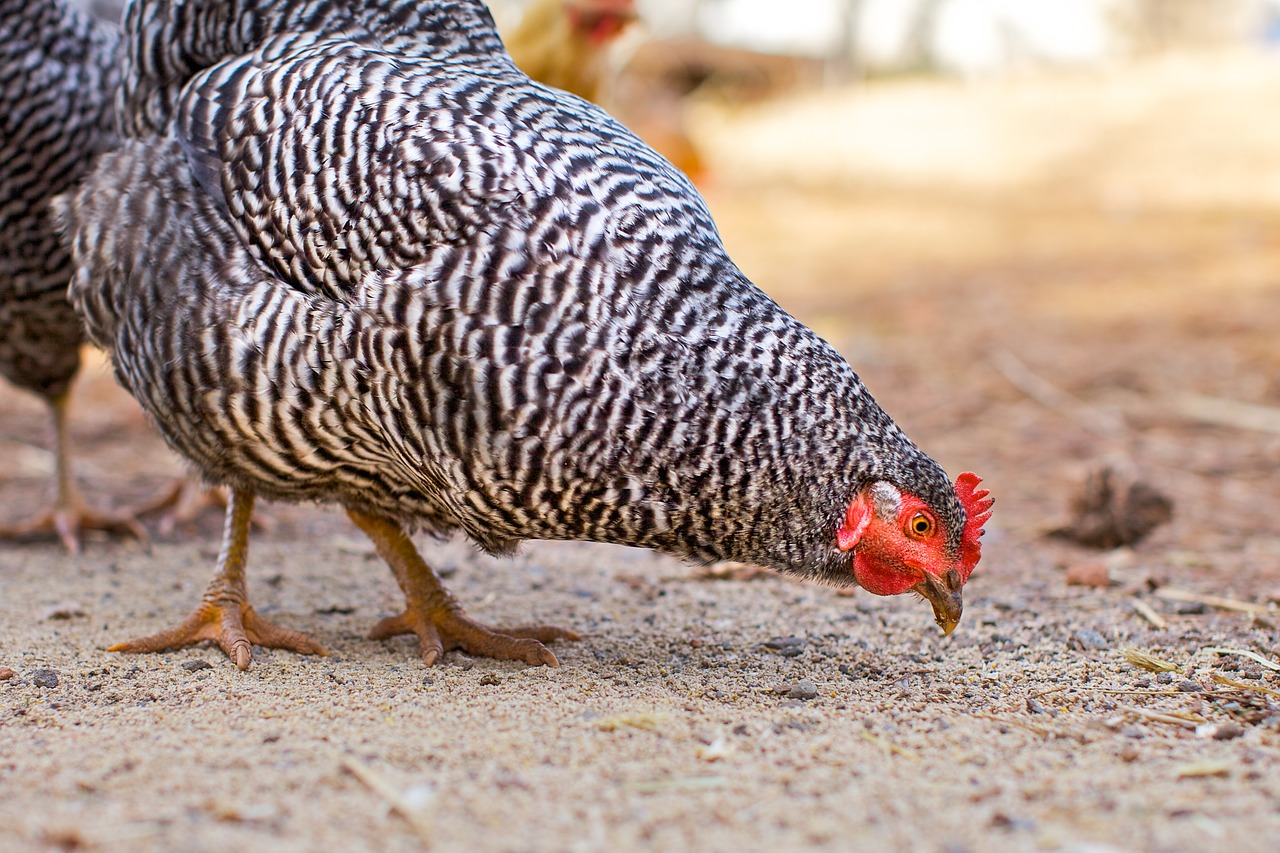
If genetics are not at play, here are a handful of ways you can help prevent egg-binding:
Layer Feed – Layer feed has the calcium and nutrients laying hens need to produce healthy eggs
Oyster Shells – A fantastic source of calcium. You can mix oyster shells in with your flock’s grit, or serve it up alone. Your hens know its good for them.
Easy on the Snacks – If you treat your hen to goodies often, maybe lay off a bit and keep her on a bland layer-feed-only diet.
Restrict Artificial Light for Pullets – Artificial lighting can induce egg-laying, which is great during the winter, but for juvenile hens, it can cause early egg-laying, and thus egg-binding.
Provide Attractive Nesting Boxes – Always give your hens enough nesting boxes (about 1 to every 3 hens) and ensure it is draft-free, dark, soft, clean, and private. Providing this kind of “nursery” will ensure your hens don’t feel the need to “hold it.”
No one likes to feel blocked up, and hens are no exception, especially because being egg bound can be deadly. So keep a watchful eye on your hens, make sure they have what they need, and act fast if you suspect a problem. Imagine their relief when that stubborn egg is finally laid!

